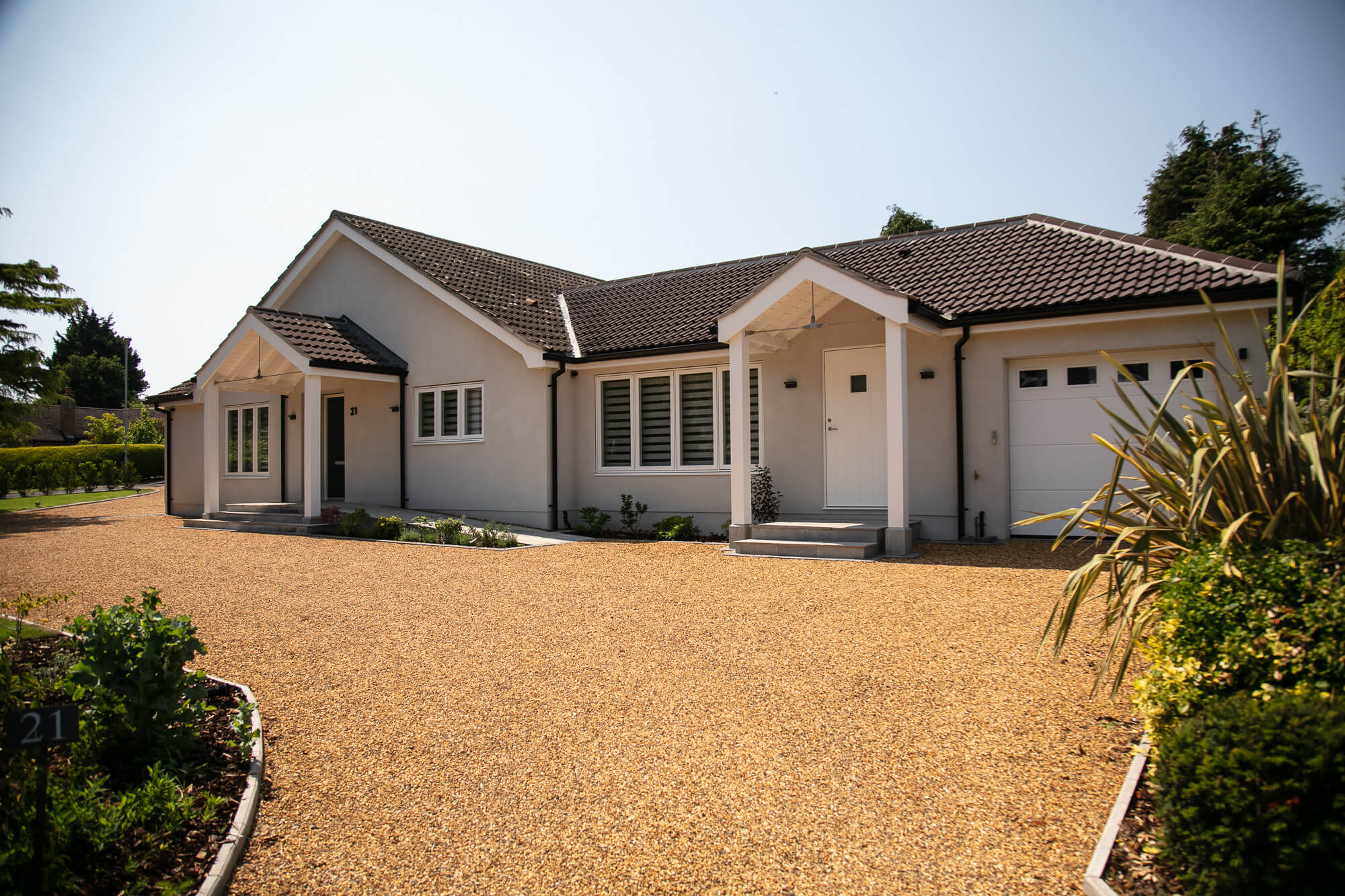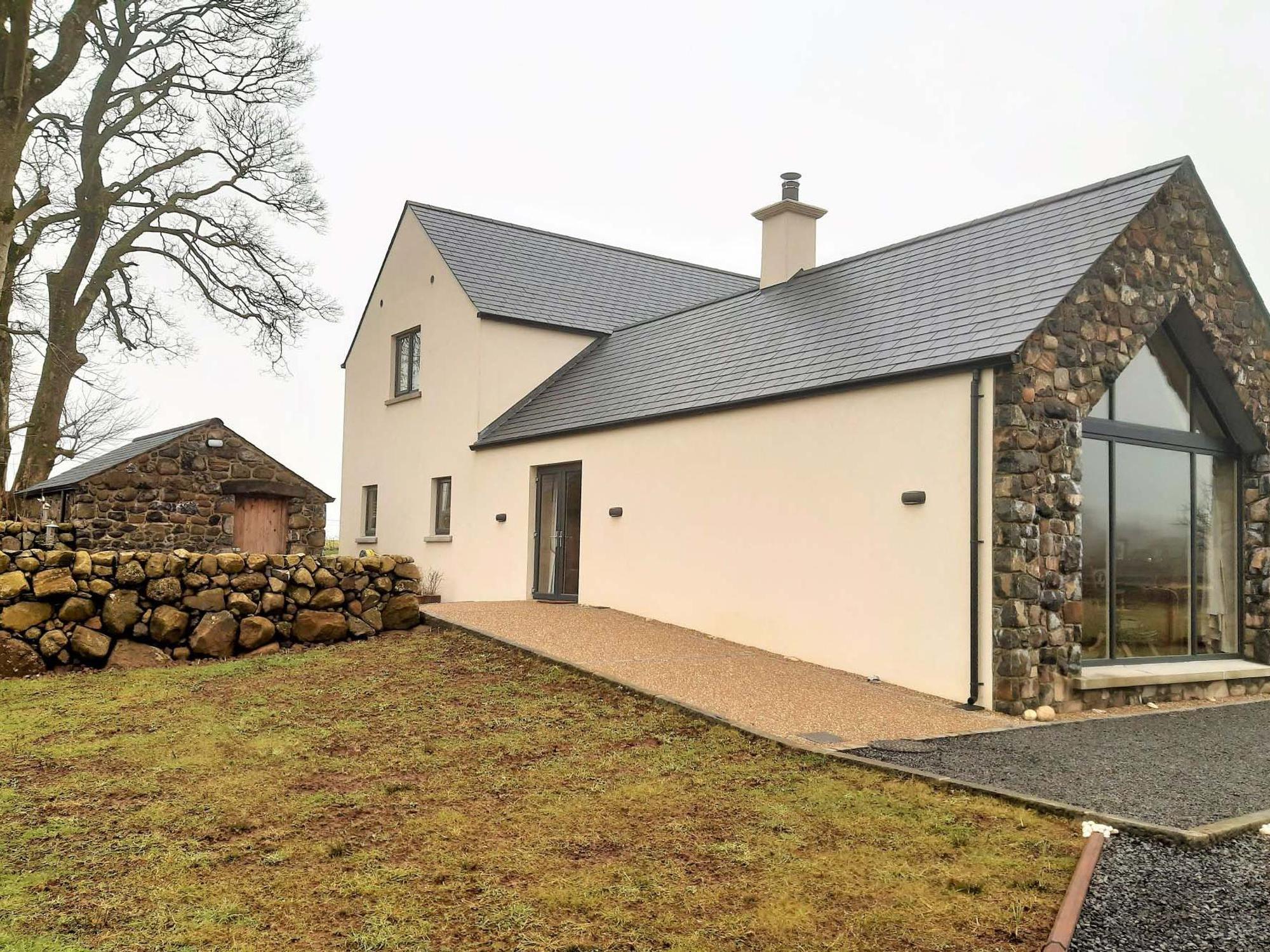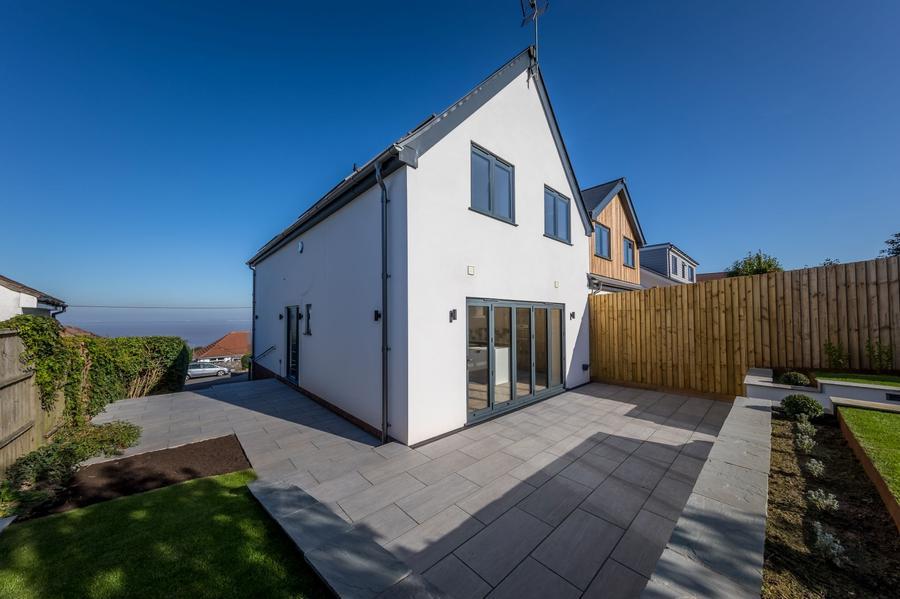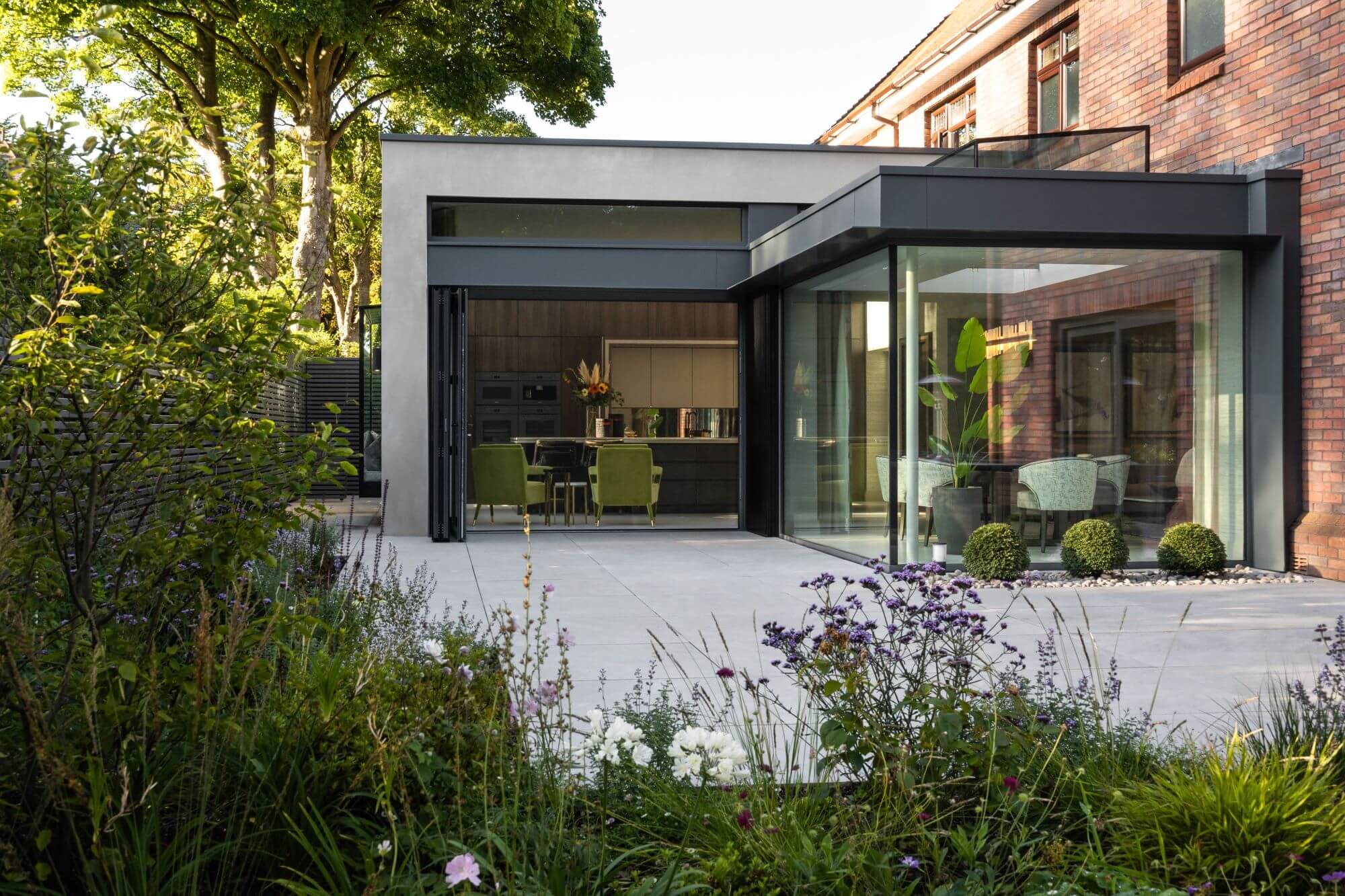Think back to when you were house hunting. What was the first thing you noticed when you first set eyes on your home? The chances are, you made a mental note of its kerb appeal and possibly added a few tasks to your ‘to do’ list for after your move. Like laying a new path, improving parking or sprucing up the garden.
However, the exterior of our home is often pushed to the bottom of the list after moving in as you get stuck in with internal painting and decorating, or even planning an extension.
But if the exterior finish of your house has seen better days, or you just don’t love it, it could be time to give it some TLC and add protection against the elements to stop issues creeping in – like damp and mould. One way to do that is with a coat of render. But is it the best option for your home, how easy is it to maintain and will it add value to your property?
Does rendering a house add value?
If it’s not your forever home, it’s worth considering whether rendering your house will impact the sale value. The answer really depends on the age and style of your property. If you’re simply refreshing a similar finish or bringing a more modern house up to date, then yes, rendering your home will smarten its appearance – it could even add to its value. How much work is needed on a property is taken into account in house valuations and potential buyers will be more likely to come in with a lower offer if they think they need to keep some cash back to spend on repairs.
However, if you’re choosing to render over original features and your home loses its character, then it could detract from the value of your property and potentially put buyers off. They may not love the look or see it as an expensive job to remove the render and re-instate period features.

Do I need planning permission to render my house?
In the majority of cases, you do not need to apply for planning permission to render your house, including changing its colour – it falls within permitted development rights. The exceptions to this are:
- If you live in a listed building – you’ll need to obtain listed building consent.
- If you live in a designated area like a National Park, an Area of Outstanding Natural Beauty, a Conservation Area or the Norfolk Broads - you will need to submit a planning permission request to your local planning authority via the planning portal.
However, although planning permission may not be needed, building regulations will usually apply if you’re rendering for the first time or replacing existing render. That’s because building regulations stipulate that exterior walls should have a certain insulation value or U-value – your builder or rendering specialist should be able to advise whether you need to add extra insulation to achieve this U-value.
The good news is that adding insulation while you are improving your home exterior can make financial sense (ticking off two jobs at the same time) and will mean you could ultimately save on your energy bills.
If you are rendering or cladding more than a quarter of your property or more than half of a single wall (for example if you’re just rendering the front of a terraced house) then you will need to notify Building Control to get the ball rolling with Building Regulations.
How long will render last?
There are many different types of render to consider, and some last longer than others. The majority will last longer than simply painting your house, but there is maintenance to consider. Some render products self-clean – they are water repellent and rainwater will naturally wash off dirt as it runs down the surface. Others you may need to jet-wash on a gentle setting every few years.

Project by James Wylie Building & Joinery. The old and the new - With it's smooth rendered finish complementing the old reclaimed stonemasonry, this farm building conversion in co. Antrim uses local products and eco-friendly materials to create a home full of character.
House render types
Cement
Cement render is one of the more affordable options on the market. Cement is mixed with lime and sand and applied in a thick coat to a hard substrate like brick or blocks. It is available in different colour options and can improve your home’s insulation – it’s an extra layer to help trap heat inside.
However, it isn’t suitable for use on surfaces that aren’t solid – for example, it can’t be used directly on top of exterior wall insulation. It is porous and inflexible, so cement tends to crack quite easily and has a shorter lifespan than some other alternatives like lime or silicone. You can expect cement render to last between 7 to 15 years.
Silicone
Silicone render is available in a wide range of colours and finishes – it’s a popular choice and a low maintenance option, offering a water-repellent finish that’s also breathable. Surfaces that are more exposed to natural washing by rainwater will be self-cleaning, and those areas that need it can be jet-washed on a gentle fan setting to keep them looking fresh.
However, it pays to be careful as over-enthusiastic jet-washing as although silicone is crack-resistant, natural wear and tear can cause cracks. That’s where some maintenance issues creep in – as silicone is tricky to patch repair.
That being said, silicone render has a long life-span – 15 to 30 years depending on your location and factors like exposure to extreme weather, with some providers offering long warranties of up to 25 years. So, make sure you choose a colour you can live with for a very long time.
Just as the brand name Hoover is to vacuum cleaners, the brand K-rend has become synonymous with silicone render. So if you’ve come across companies offering quotes for K-rend, you can rest assured that they are one and the same thing.
It’s worth noting that, as a higher-performance product, Silicone render tends to come with a higher price point than other options such as cement. However, its longevity may mean it offers a cost-effective option in the long run due to its low maintenance and long life.
Acrylic render
Like silicone, acrylic render is another synthetic option that can offer you a water repellent finish and it’s available in a range of colours. It’s significantly cheaper than silicone but you may end up paying more in the long term as it’s not self-cleaning with rainwater like silicone and can cause issues with fungus and damp.
Here’s why: The critical difference is that acrylic, unlike silicone, is not a breathable product. This means it may not be suitable for your property, for instance if you have a previous damp problem or have used an insulating material which needs to breathe – like mineral wool.
It’s also worth mentioning that neither silicone nor acrylic are as environmentally friendly as traditional mineral-based renders. Acrylic is a plastic and the manufacturing process for silicone produces some hazardous by-products. The impact of rendering a single property may have negligible effects on the environment, but this will be magnified the more people choose these types of finish for their homes.
Polymer render
Like acrylic, polymer render is also extremely weatherproof, but unlike acrylic render it offers a more breathable solution. Polymer render offers a much more flexible alternative and is highly resistant to cracking. It is stickier and so bonds better with the surface of your walls, which may be helpful if you’re covering tricky surfaces.
Lime render
Lime render or plaster is a traditional finish that’s porous and breathable and usually finished with a coat of lime wash paint. It offers a huge variety of textured finishes and colour options.
It is naturally quite flexible, which means it’s perfect for older buildings that shift about, expanding and contracting with the temperature and humidity. It’s a better insulator than cement and can contribute to regulating the interior temperature of your home.
Perhaps surprisingly for a seemingly ‘old fashioned’ product it offers many of the benefits of a high-performance modern render – it’s water repellent and resistant to mould. It also has longevity.
However, it can be tricky to work with and there are fewer skilled tradespeople who have experience with traditional lime render compared to other products.
Cork render
Cork render offers a natural and sustainable alternative to traditional and high-performance modern renders. It’s waterproof, lightweight and adheres to just about any surface, including metal. Most importantly, it has excellent thermal insulation properties – helping you to achieve those all-important low U-value ratings and keep heat in your home.
Aesthetically, it might conjure up visions of 70’s cork panelling, but in fact, cork render is smooth and similar in texture to other types of render and is available in a range of colours.
The process of harvesting cork has a very low environmental impact and is sustainable as only the surface bark of the tree is removed, growing back over a period of nine years. So, you can choose cork render knowing you are causing minimum harm to nature compared to some other render products.
How should I plan for house rendering?
Firstly, check whether you live in an area that has any planning constraints – you can usually do this on your Local Authority’s website or by contacting them.
It’s worth hiring a professional for the job of rendering your house. However, before you go ahead with finding a builder, consider a whole house retrofit survey first.
A retrofit survey costs around £100 to £300 depending on the size of your house and where you live. The retrofit surveyor will assess your home and provide you with a list of the additional work needed to make your house thermally efficient and warm. The aim is to save you money on your energy bills and help to cut carbon emissions. The survey lists additional works in order of priority, so you can tackle them individually whenever finances allow.
It may recommend taking steps to properly insulate your walls before you render your external walls. Likewise, if you were originally planning to add exterior wall insulation when you render your house, the survey will tell you if this is the best investment for you, or if your budget is better spent elsewhere for maximum energy savings.
A good place to start is with a company like Retrofit Works who can help you find a Retrofit Assessor. The FMB is campaigning for a national retrofit strategy to be introduced by the Government to help the UK meet the net zero carbon emissions by 2050 target. The strategy focuses on how we can upgrade UK homes to be more energy efficient.

Project by FMB member PAP Building Services Ltd. Render clads this thermally efficient new build, constructed from materials specially selected for their high-spec thermal performance to create a warm and welcoming abode.
Can I get rid of pebbledash?
Pebbledash was a popular design feature in houses from the arts and crafts movement of the late 1800’s to its heyday in the 1930’s, when it was the render of choice for the suburban semi-detatched house. It can be an authentic period feature and is maintenance-free provided you don’t paint over it. However, if you are set on a smooth modern finish, you can render over pebbledash in some circumstances. It’s best to speak to a qualified tradesperson - if your wall is in good condition and they determine that the additional load of render won’t put stress on the pebbledash, they might recommend rendering straight over it. However, you may be advised to remove the pebbledash first, which can come at an additional cost for the labour involved.
If you live in a period property and the pebbledash isn’t original, it may be worth exploring pebbledash removal and re-pointing as an option. An original brick finish can lend kerb appeal to your property and add those desirable period features back in. Don’t forget to factor in the cost of repairing any damaged bricks, and bear in mind that you could find it’s damaged beyond repair.
Alternatives to house render
If render isn’t sparking your imagination, there’s a world of alternatives to choose from that could dramatically update the external appearance of your home, such as:
- Timber
- Stone
- Metal
- Composite
- Fibre cement
- Tiles
- Brick slips
It’s best to check with your Local Authority before cladding your home if it’s different in appearance to your current walls, as you may need to go through a planning application.

Can I render my house myself?
It is possible to tackle a rendering job yourself, but a smooth appearance and neat finishing requires knowledge and experience. If you try to take on the work yourself, the end result may not be as professional or as you expected and it could detract from the value of your property if you want to sell your home, as potential buyers may see it as something they will have to fix.
When you’re ready to get some quotes in, you can find a vetted and independently inspected Master Builder for the job by searching for rendering services near you on our Find a Builder tool.
Find the best eco product for your home
See our independent reviews for the latest advice on eco products for your home.

